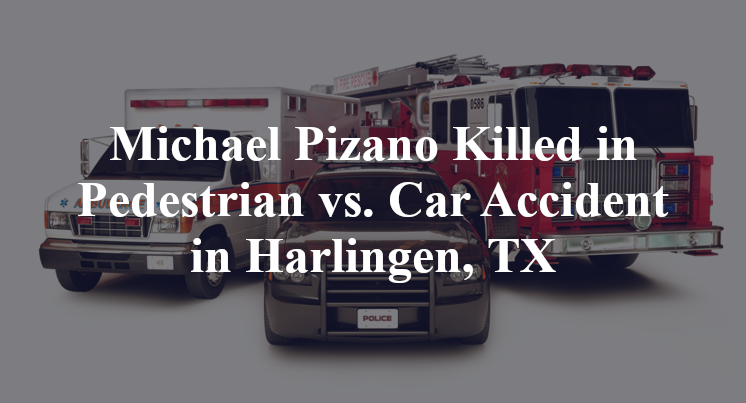Michael Pizano Killed in Pedestrian vs. Car Accident in Harlingen, TX
UPDATE (August 7, 2025): Recent reports have been released which identify the pedestrian who lost his life as a result of this accident as 38-year-old Michael Pizano. No further details are currently available. Investigations remain underway.
Harlingen, TX — July 6, 2025, a man was killed due to a pedestrian versus car accident just before 9:00 p.m. along Commerce Street.
According to authorities, a man was on foot in the vicinity of the South 4th Street and South Commerce Street intersection when the accident took place.

Details surrounding the accident remain scarce. Preliminary reports state that, for as yet unknown reasons, the man was struck by a motor vehicle. The pedestrian reportedly sustained fatal injuries as a result of the collision and was declared deceased at the scene. Additional information pertaining to this incident—including the identity of the victim—is not available at this point in time. The investigation is currently ongoing.
Commentary by Attorney Michael Grossman
When lives are suddenly cut short, especially in public settings where people expect to move safely, the aftermath often leaves more questions than answers. It's not just about how an incident happened—it's about whether everything that should be known is being pursued with care and urgency.
1. Did the authorities thoroughly investigate the crash?
When a person on foot is struck and killed, investigators have a responsibility to probe deeper than just collecting witness statements and filing routine reports. Were investigators able to map out the precise path of the vehicle and the pedestrian? Did they examine nearby businesses or homes for surveillance footage that could shed light on driver behavior moments before impact? The late hour may have presented visibility challenges, but the real issue is whether officers took the time to reconstruct the sequence of events, or if assumptions filled in the gaps. Training levels vary widely between departments—some officers know how to do a full-scale pedestrian crash analysis; others may not.
2. Has anyone looked into the possibility that a vehicle defect caused the crash?
People tend to assume that if a car was moving and it hit someone, the driver was simply inattentive. But sometimes, even the best intentions are undone by something mechanical—a brake that doesn’t catch in time, a throttle that doesn’t release, or a sensor that fails to alert the driver. Was the vehicle inspected for these types of issues? If it wasn’t, then a whole avenue of causation may be left unexplored.
3. Has all the electronic data relating to the crash been collected?
Today’s vehicles often leave behind a digital breadcrumb trail that can tell investigators more than any eyewitness. Did the car show signs of braking before the collision? Was it traveling above the speed limit? Did the driver’s phone show any signs of use at the time of the crash? If this data hasn’t been collected—or worse, wasn’t even considered—then key pieces of the story could be missing.
As investigators continue their work, it’s essential that they go beyond the surface. A pedestrian lost his life. That demands a full accounting—not just of what was seen, but of what might have been overlooked.
Takeaways:
- Police should do more than write up basic reports; full crash reconstruction is key.
- Cars can malfunction too—brakes, sensors, or throttles might play a role.
- Digital data from cars and phones can reveal what really happened in the moments before impact.

*We appreciate your feedback and welcome anyone to comment on our blog entries, however all visitor blog comments must be approved by the site moderator prior to showing live on the site. By submitting a blog comment you acknowledge that your post may appear live on the site for any visitors to see, pending moderator approval. The operators of this site are not responsible for the accuracy or content of the comments made by site visitors. By submitting a comment, blog post, or email to this site you acknowledge that you may receive a response with regard to your questions or concerns. If you contact Grossman Law Offices using this online form, your message will not create an attorney-client relationship and will not necessarily be treated as privileged or confidential! You should not send sensitive or confidential information via the Internet. Since the Internet is not necessarily a secure environment, it is not possible to ensure that your message sent via the Internet might be kept secure and confidential. When you fill out a contact or comment form, send us an email directly, initiate a chat session or call us, you acknowledge we may use your contact information to communicate with you in the future for marketing purposes, but such marketing will always be done in an ethical way.